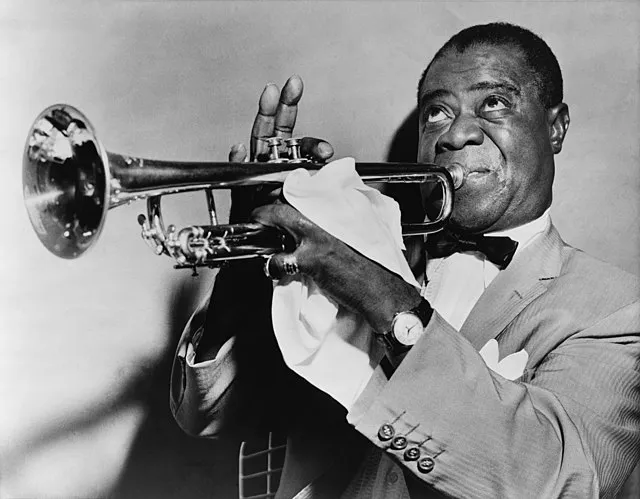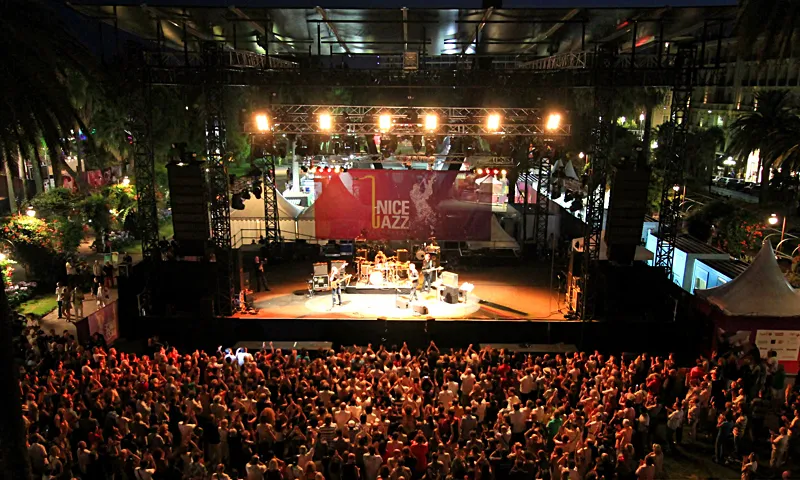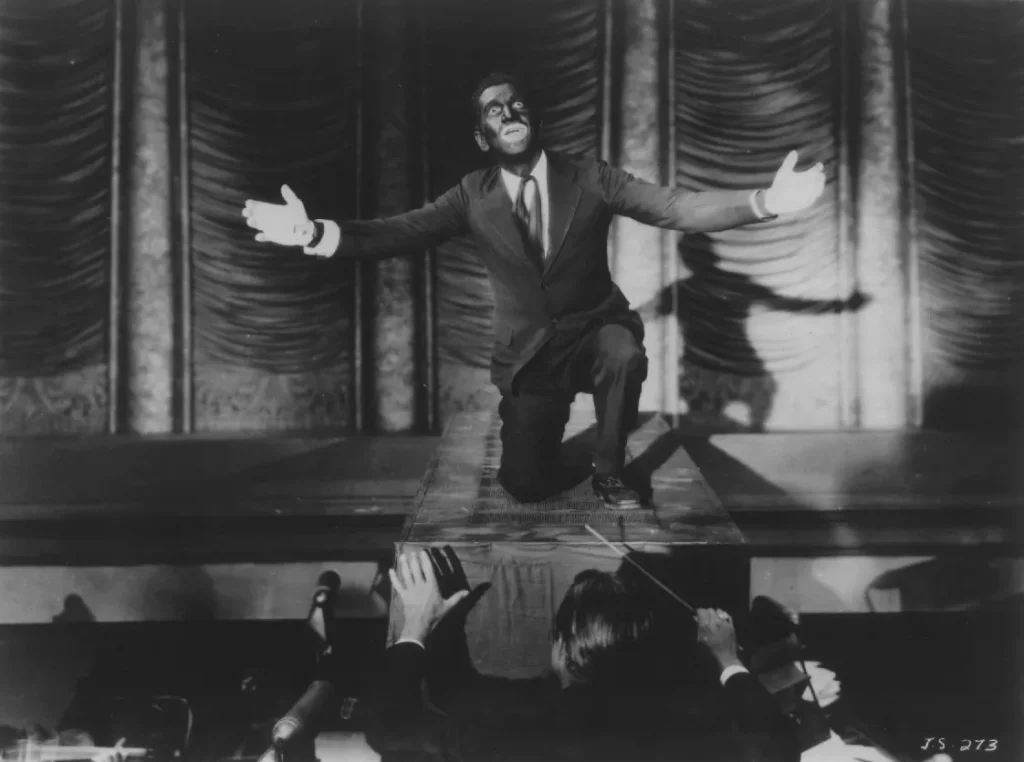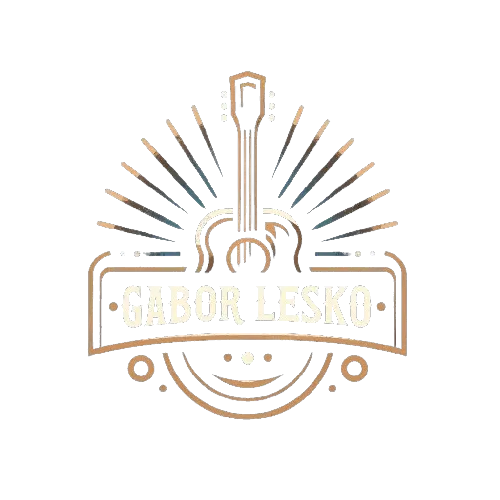The history of jazz
Jazz is not just a genre of music. It is a living legend whose history is full of exciting twists and turns, great talents and cultural explosions. From its humble beginnings in the slave-driven American South to its worldwide recognition and constant evolutionary process, jazz remains one of the most influential and significant musical genres in the world. In this article, we will take a fascinating journey through time and space to delve into the rich history of jazz.
The Roots of Jazz: Birth in the Southern United States

Jazz has its roots in an African musical tradition that came to the Americas with slaves during the slave trade. The rhythms, melodies, and dance rituals of African culture blended with European musical forms to create a unique sound that came to be called jazz.
The first signs of jazz can be found in the music of slaves performed on the cotton plantations of the South. These musicians used their instruments – voices, percussion, and wind instruments – to express their pain, hope, and joy. Music was becoming a way to resist and express freedom in the face of suppression.
As jazz developed, its influence began to spread beyond the working-class communities and became part of urban culture. New Orleans, with its diverse ethnic and cultural groups, became the birthplace of jazz. Here African, European, and Caribbean musical traditions merged together, giving birth to a new sound that soon spread across the country and the world.
The Great Depression Era and the Jazz Anschlag

The period of the Great Depression in the United States had a significant impact on the development of jazz. A time of economic crisis and social instability led to a flourishing of music and art in search of hope and solace. During this period, jazz became not only entertainment, but also a way to express emotions, struggles, and solidarity.
Swing orchestras such as the Fletcher Henderson Orchestra and the Count Basie Orchestra became popular on dance floors and radio waves, bringing new melodies and rhythms to the world. Legendary musicians like Louis Armstrong, Duke Ellington and Billie Holiday took jazz to a new level and brought it into the hearts of millions of people around the world.
Babington and jazz in postwar America
In the post-war years, jazz continued to evolve, taking on new forms and directions. The Babbington Era, or “Great Babbington,” was characterized by economic prosperity, social change, and cultural diversity. During this period, jazz underwent a revolution, with the emergence of new styles such as bebop and cool jazz.
Musicians such as Charlie Parker, Dizzy Gillespie and Thelonious Monk became leading figures of bebop, bringing new harmonies, melodies and rhythms to jazz. Their technical mastery and innovative approach to music made them legends who left an indelible mark on jazz history.
Jazz Today: Preserving Traditions and New Directions

Jazz is a genre of music that remains vibrant and inspiring in today’s world. Despite its roots in the past, it continues to evolve, combining the preservation of tradition and experimentation with new sounds and styles. Let’s take a look at how jazz remains relevant and in demand today.
Preserving classical traditions
One important aspect of jazz today is the preservation of classical traditions. Plenty of musicians and orchestras still perform jazz music standards such as “Summertime” or “Take Five,” faithfully capturing their spirit and emotional depth. This not only keeps the legacy of jazz culture alive, but also gives new generations the opportunity to immerse themselves in the richness of classic compositions.
Experimenting with new sounds
At the same time as preserving tradition, jazz continues to explore new sounds and directions. Many contemporary jazz musicians contribute to the genre by combining it with elements of funk, rock, electronica and other styles. This creates unique and exciting sounds that appeal to new audiences and allow jazz to remain relevant and innovative.
Integration with other arts
Jazz also actively integrates with other arts such as theater, dance, and visual art. Collaborations between musicians and artists, dancers and filmmakers are becoming more common, creating new and exciting projects that redefine traditional ideas about jazz.
Education and Outreach
An important part of preserving jazz culture is education and enlightenment. Many schools, universities, and music programs offer jazz education, allowing young musicians to learn and grow in the genre. In addition, many jazz festivals, workshops and lectures are held around the world, promoting the knowledge and love of this unique art form.
Jazz in movies

The sounds of jazz fill movie screens, bringing waves of emotions and memories. The history of jazz in movies is a story of passion, talent and the greatness of the music, which has had a huge impact on filmmaking. From the first sound films to modern masterpieces, jazz has been an integral part of cinematic art, enriching it and giving it a special charm.
The earliest references to jazz in movies are associated with the silent film era. Already at the beginning of the 20th century, many silent films were accompanied by live music, and jazz, with its lively rhythm and expressiveness, was the perfect accompaniment for dramatic and comedic scenes. Films such as Blackmail (1929) and Soffits (1927) used jazz motifs to create an atmosphere of suspense and intrigue.
However, the history of jazz in film is not limited to its role in accompanying silent films. With the development of sound recording and soundtrack capabilities, jazz became a direct part of the plot of many films. Films of the 1930s and 1940s, such as Chicago (1927) and Casbah (1948), portrayed the atmosphere of jazz clubs and jazzmen, reflecting the cultural significance of this musical style.
The Golden Era of Hollywood also marked an important era for the history of jazz in film. Films such as Evenings on a Farm Near Dikanka (1939) and Casino Royale (1967) presented jazz as a symbol of freedom, passion, and romance. It was during these years that audiences first heard famous jazz standards such as “Take Five” and “Summertime” in movies.
With the advent of new technology and movie genres, the history of jazz in film continues to evolve. Modern films such as The Streets of New York (2002) and La La Land (2016) use jazz to create atmosphere and emphasize the emotional drive of the characters. Even in the science fiction and fantasy genres, echoes of jazz improvisation can be heard, demonstrating the versatility and influence of this genre of music.
The history of jazz in movies is a story of passion, freedom, and the expression of human feelings. From silent films to modern blockbusters, jazz continues to inspire filmmakers and audiences, leaving its unique mark on cinematic history.
Conclusion
The history of jazz is an amazing journey through times and cultures, from its humble beginnings in New Orleans to global popularity and recognition. It is a genre that not only reflects the evolution of musical techniques and styles, but also serves as a testament to societal change, struggle, and triumph. The history of jazz is a story of passion, innovation and an inexhaustible sense of freedom that continues to inspire and attract new fans around the world.
-
Where did the first signs of jazz appear?
The first signs of jazz can be found in the music of slaves on the cotton plantations of the South. These musicians used their instruments - voices, percussion and wind instruments - to express their pain, hope and joy. Music became a way to resist and express freedom in the face of suppression.
-
What jazz groups were prominent during the Great Depression era?
Swing orchestras such as the Fletcher Henderson Orchestra and the Earl's Orchestra. Legendary musicians such as Louis Armstrong, Duke Ellington and Billie Holiday took jazz to a new level and brought it into the hearts of millions of people around the world.
-
When was the first time jazz was used in films?
In the early twentieth century, many silent films were accompanied by live music, and jazz, with its lively rhythm and expressiveness, was an excellent accompaniment to dramatic and comedic scenes. In films such as Blackmail (1929) and Soffits (1927), jazz motifs were used to create an atmosphere of suspense and intrigue.

